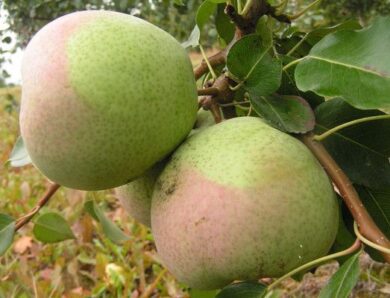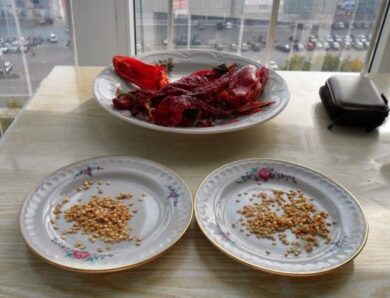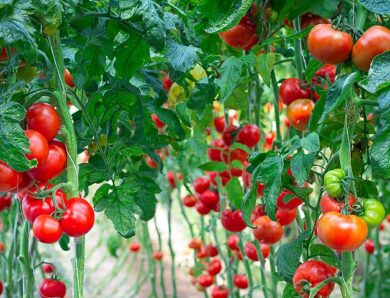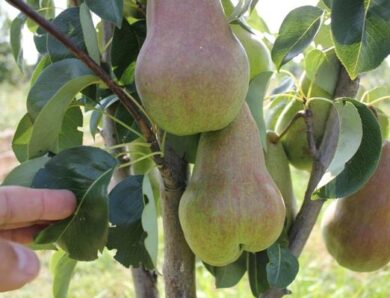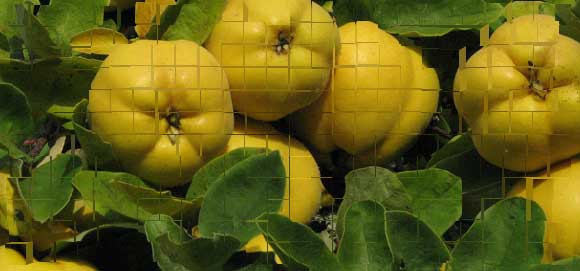
Diseases and pests of quince: review and methods of struggle
Japanese quince is a plant, which is chosen for its unpretentiousness and nice appearance. However, sometimes the tree is affected by various diseases and pests. Leaves suffer from diseases, fruits, flowers and even the bark of the plant. In this article we will talk about it, existing pests and diseases of quince, and how to treat the plant.
quince disease
Why quince dries or why quince blooms, but does not bear fruit - the most common questions of gardeners, who grow this plant. The answer is one: most likely, your tree is sick. Of course, the most terrible diseases are various forms of cancer (affects the bark), in which the bark of the plant recedes and bursts.

If the bark is all right, and it does not peel off, did not recover and did not burst, you can rest easy, the plant can be saved. If you noticed, peeling bark - it is better to get rid of the plant without delay. There are many diseases besides cancer, to which the quince tree is exposed, and now we will consider them in more detail.
moniliosis
This is a common fungal disease, which is caused by high humidity. Fruits suffer first of all from a disease, which already have various mechanical damages. Brown spots begin to appear on them, which increase very quickly in size. Quince fruit becomes loose, loses all taste and falls to the ground.
What to do to combat the disease? You can use copper sulfate and Bordeaux mixture, as well as drugs "Teldor" or "Rovral".
drilling leaves
Many farmers are wondering: why quince does not bear fruit? Another popular question: why not all is well with fruiting, if the tree looks perfectly healthy? If Japanese quince does not bear fruit, and the flowers on the branches withered and fell, most likely, you are dealing with drilled leaves. Another symptom of this disease is drying of the tips of the shoots. Sometimes quince fruits can still appear, but soon they rapidly turn black and fall off.
What to do, to save the tree? First of all, remove all infected items and burn them. After that, you can treat quince with a remedy, like Oxyhom (or similar means).
Powdery mildew
Initially, the ends of the branches are covered with a pale red plaque. If no action is taken, soon the plaque will turn into a thick film, on which the bodies of the fungus-pathogen will be clearly visible. The consequences of this disease are quite sad: withered shoots stop growing, the leaves turn yellow, deform and dry up, and the plants themselves stop flowering and slowly dry.
rust
At first, small orange bumps appear on the leaves, and pustules form on the underside. Eventually, such a bump cracks, and fungal spores spread throughout the county. You may also notice, that the leaves turned yellow and fell very quickly.
To get rid of the infection, various kinds of fungicides are used.
ovarian rot
This disease begins with the appearance of small dark spots on the leaves, which gradually increase in size. Disputes can also get into the buds and ovaries, why flowering stops.
Get rid of the disease by removing all infected parts of the plant, and then carry out treatment with "fundazole".
gray rot
Brown spots are formed on the leaves, which increase very quickly in size. The shoots of the plant also suffer. Subsequently, the leaves and twigs are covered with fluffy plaque. The disease is dangerous because, which can move very quickly from one tree to another.
In the fight against this infection proved to be excellent drugs "Oksihom" and "Topaz".
quince pests
In addition to various diseases, quince can be attacked by various insects. They are dangerous to them, which multiply rapidly and destroy the plant. Therefore, to protect the quince from death, it is necessary to identify the pest as soon as possible and take appropriate measures.
Leaf-mining moth
This is a generic name for a moth, which "passes" the leaves, as a result, they initially become much lighter, than should be, and then fall off. Due to this, quince is very weak, much worse tolerates low temperatures, and its yield is many times less.
You can get rid of insects with the help of "fundazole". In order for this pest not to encroach on your quince, it is enough to monitor the cleanliness of the stem circle.
fruit mites
These are brown and red ticks, which pose a huge danger to all fruit trees. They affect young shoots and buds of plants, sucking all the juices out of them. Sticky drops of juice are a characteristic feature of this insect, secreted by the affected plant.
aphids
Deforms leaves and shoots, sucking all the juices out of them. They stop growing and gradually wither. Aphids are also a huge danger, because it spreads viral diseases, which cannot be cured.
Get rid of the parasite with an insecticide or soap solution (bar of household soap on a bucket of water).
apple fruit eater
These insects can damage its fruit. In addition, they reproduce very quickly, and therefore several generations of fruit eaters appear during the season.
Get rid of insects will help drugs "Lepidotsid" and "Dendrobacillin".
Quince Video
From this video you will learn about it, how to grow and care for ordinary quince in the garden.

